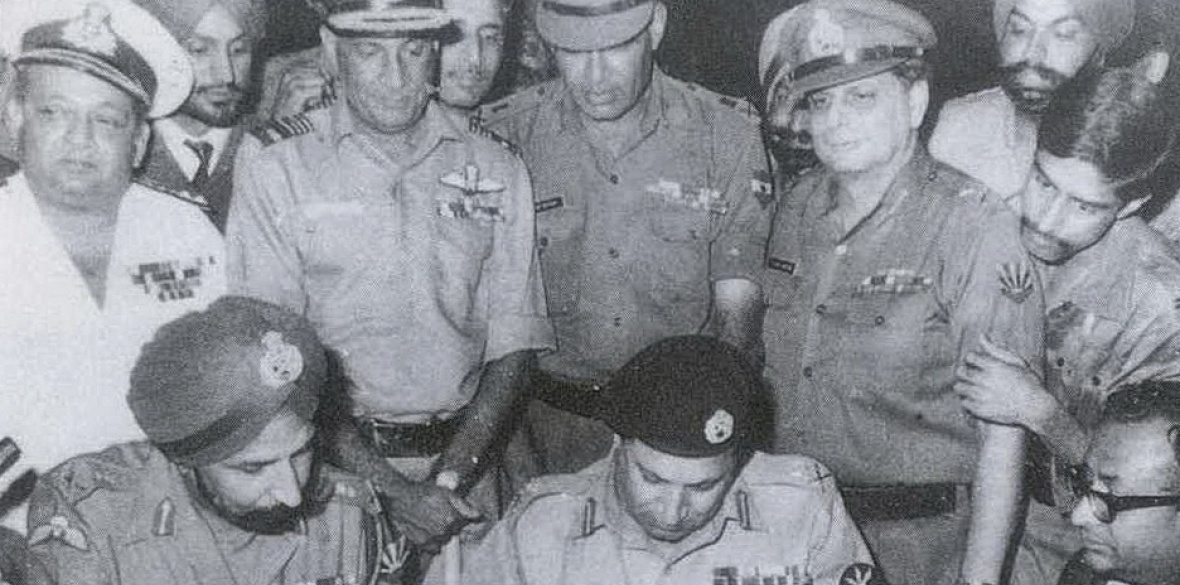This is the last article you can read this month
You can read more article this month
You can read more articles this month
Sorry your limit is up for this month
Reset on:
Please help support the Morning Star by subscribing here
BANGLADESH and its diaspora around the world have so far in 2021 not been able to celebrate the formation in extremely difficult circumstances of the independent state of Bangladesh — land of the Bengalis — 50 years ago because of the Covid-19 pandemic. So they are sure to make the most of the December 16 official celebrations.
East Bengal was incorporated into Pakistan in 1947 on the basis of a shared majority religion and Urdu was imposed as the state language of Pakistan, even though the vast majority in East Bengal spoke Bangla. Almost straight away a struggle for the liberation of Bangladesh began, which went on for 24 years.
This liberation struggle came to focus on the mother tongue of Bangla, as the language movement came to the forefront of the campaign for independence.
Matters came to a head on February 21 1952, when students protesting at Dhaka University against the imposition of Urdu as the national language of Pakistan were gunned down by police.
This date is now celebrated as Languages Martyrs’ Day (Shohid Dibos), a national holiday of Bangladesh that takes place each year, commemorating the Bangla language movement and those who died for it.
On this day, people visit the Shaheed Minar monument in Dhaka to pay homage and arrange seminars discussing and promoting Bangla.
On the initiation of Bangadesh, the day has also been adopted by Unesco since 1999 as International Mother Language Day as a worldwide day of annual observance to promote awareness of linguistic and cultural diversity and to promote multilingualism.
Other equally contentious issues in the 1950s and ’60s were the regional inequality and underdevelopment of East Bengal, which was an integral part of the structure of Pakistani military dictatorship.
In response, due to these regional economic imbalances, sectional divisions grew and support for the Bengali ethnic nationalist Awami League also grew, which invoked the Six Point Movement for greater provincial political autonomy.
The first general election in Pakistan was scheduled in November 1970, however it soon had to be moved to December as a result of the Bhola cyclone on the eastern wing.
The cyclone was a devastating one that struck both East Pakistan and India’s West Bengal on November 11, costing half a million lives.
The lack of response by the Pakistani authorities became another source of tension between the authorities and the Bengali people.
When the election did eventually happen, the results were not questioned as it was considered to have been a free and fair election run by the authorities.
But the implications of the results were quite clear — Pakistan had elected a Bengali as its prime minister, Sheikh Mujib Rahman, the leader of the Awami League, after they won almost all the seats in East Pakistan where the majority of Pakistanis lived anyway.
So, for some, the history of Bangladesh’s struggle for liberation represents an example of “progressive” linguistic nationalism.
It is one of the clearest and most courageous examples in modern history of a democratic movement pursuing every non-violent option, including winning a national election, in order to overcome the trap of underdevelopment and regional inequality that were part and parcel of the Pakistani military dictatorship.
However the dictatorship would not yield to the results of a democratic vote and on March 25 1971 the Pakistan army opted for mass murder under what was known as Operation Searchlight and from that moment onwards the Bangladesh war of liberation had begun.
The army pursued the systematic elimination of nationalist Bengali civilians, including students, intelligentsia, religious minorities and armed personnel.
While doing this, the junta also annulled the results of the 1970 elections and arrested prime minister-designate Rahman.
After nine months and hundreds of thousands of deaths, the liberation war ended on December 16 1971 following the intervention of the Indian army, with the military forces of West Pakistan surrendering in Bangladesh.
This date is now celebrated as Victory Day in Bangladesh (Bijoy Dibosh) and is also commemorated across India as Vijay Diwas.
Geopolitically, India undertook its intervention only after signing a Treaty of Peace, Friendship and Co-operation with the Soviet Union and recognition of the new state of Bangladesh, in defiance of the US fleet in the Bay of Bengal and the personal animosity of Richard Nixon and Henry Kissinger to Indira Gandhi.
This was after 10 million Bengalis had already fled into India and reports of genocidal attacks being made on the population by the Pakistani army were being reported to the State Department by US officials from Dhaka and ignored.
So in short, the formation of the state of Bangladesh clearly disproved the two-state theory of partition of the Indian subcontinent on the basis of religion — the dominant ideology of imperialists like Earl Mountbatten and backers of the creation of Pakistani state like the Muslim League elite.
Linguistic, ethnic and regional divisions were shown to be far more important to a people than any religious affiliation.
The partition’s advocates had clearly forgotten that “India is not a nation, nor a country. It is a subcontinent of nationalities,” as once stated by the founding father of Pakistan, Muhammad Ali Jinnah — the irony of which will not be lost on many who know the history of the Indian subcontinent.








